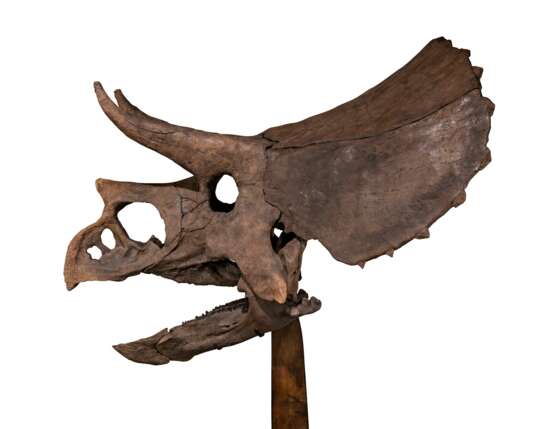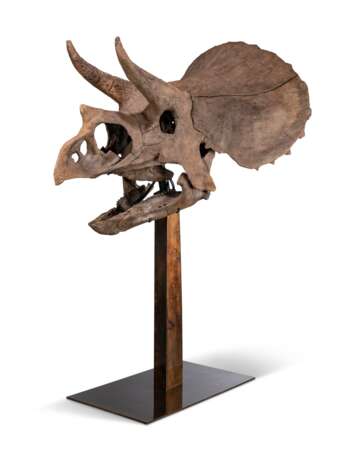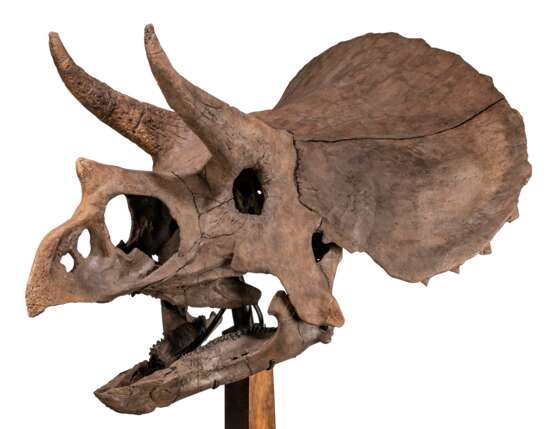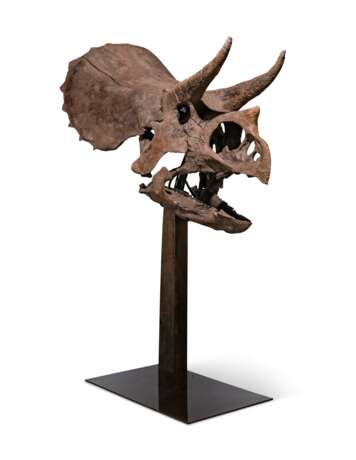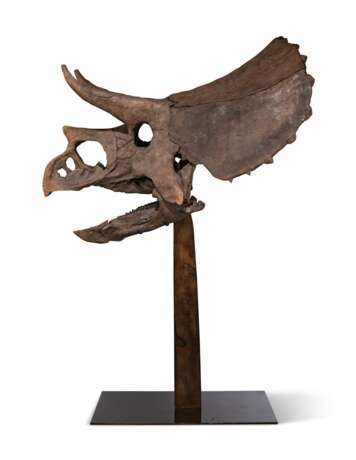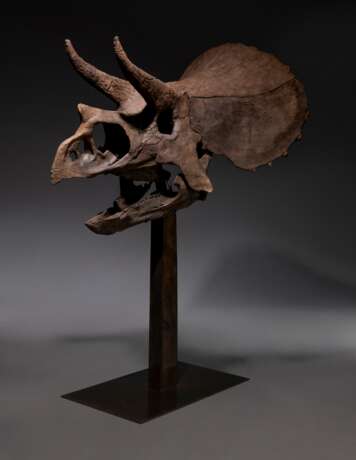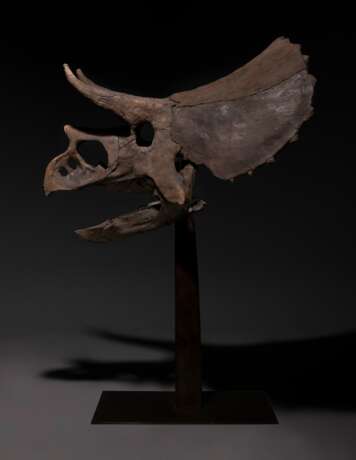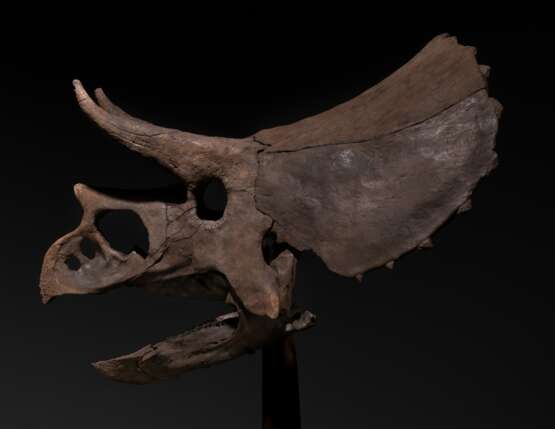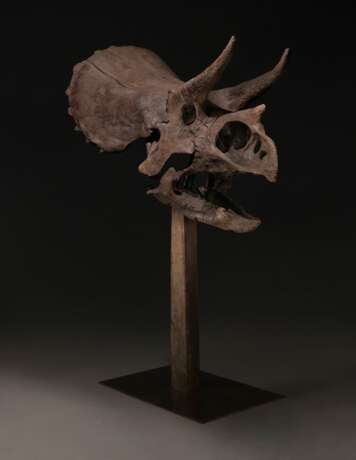ID 637780
Los 125 | THE SKULL OF A JUVENILE TRICERATOPS
Schätzwert
£ 300 000 – 500 000
A rare juvenile specimen. With its three-horned head bookended by a pointed beak and flaring frill, the Triceratops is one of the most famous species of dinosaur. They lived contemporaneously with the Tyrannosaurus rex in the late Cretaceous — the final period of the dinoaurs that ended with their mass extinction approximately 65 million years ago. The skull of a Triceratops is emblematic of the creature’s strong defense and counter-attacking threat, and among the most recognizable skulls of any animal, alive or extinct. The present specimen, with its arching brow horns and tall nasal horn, is from a juvenile Triceratops prorsus — one of only a handful to come to market.
These herbivores could grow up to 9 metres long, and weigh as much as 12 tonnes, roaming in a region that is now east of the Rocky Mountains in North America. In the Cretaceous period this habitat would have been characterised by dense fauna, marshland and shallow seas, which provided plentiful nourishment for any herbivore. The diet of Triceratops, as evidenced by its toothless beak, primarily comprised palm fronds. The horns were therefore not to hunt prey, but to protect itself from apex predators such as Tyrannosaurus rex. Although the lumbering bulk still left it exposed to an unexpected attack, a single strike from a brow horn could potentially gore a predator in the neck or heart, fatally wounding it.
The bony frill ostensibly provides an additional layer of protection, but more studies have speculated that it may have originally been brightly coloured, and could have served a more diverse purpose. Either as ornamentation for a mating ritual, helping Triceratops to identify one another, or even to regulate its body temperature, the frill is visually arresting to the modern observer and a crucial functional aspect of this prehistoric creature. Unusually for a Cretaceous herbivore, Triceratops fossil remains are almost always found individually, with no fossils of mates or young found nearby. This lends credence to the theory that Triceratops actually spent much of its life alone, rather than travelling in larger herds for protection.
The first specimen of Triceratops was a pair of horns discovered in 1887, which were at first mis-identified as belonging to a Pliocene bison. After realising his mistake, American paleontologist Othniel Charles Marsh described the two species, horridus and prorsus, in 1889 and 1890 respectively. The first mounted skeleton was reconstructed by the Smithsonian in 1905 and has remained on display ever since. As such, the Triceratops has captured the public imagination for over a century, with its skull a quintessential relic of the last years of the Age of Dinosaurs.
COMPARATIVE LITERATURE
Marsh, O. 'Description of new dinosaurian reptiles', The American Journal of Science, Series 3, Vol.39 (January 1990) pp.81-86.
82 x 55 x 40in. (208 x 140 x 102cm.)
| Adresse der Versteigerung |
CHRISTIE'S 8 King Street, St. James's SW1Y 6QT London Vereinigtes Königreich | |
|---|---|---|
| Vorschau |
| |
| Telefon | +44 (0)20 7839 9060 | |
| Aufgeld | see on Website | |
| Nutzungsbedingungen | Nutzungsbedingungen |
